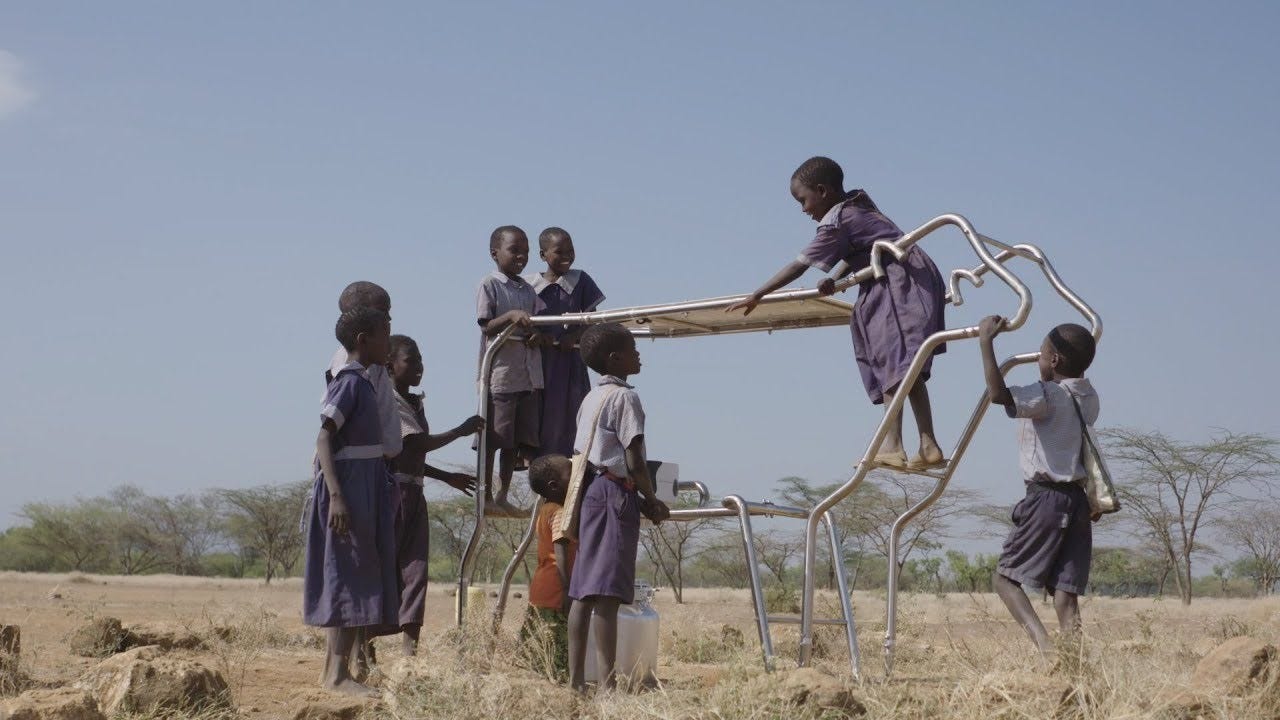A cow is keeping kids in school.
No, seriously.
A cow is keeping kids in school.
No, seriously.
In rural Kenya and Tanzania, where child labor is still a painful reality, a team from South Korea came up with a deceptively simple solution.
It wasn’t a policy.
It wasn’t a donation.
It was a cow.
A solar-powered one.
They call it Solar Cow — a solar charging station shaped like a cow, installed at schools. It looks whimsical at first glance. But it’s designed for something radical.


Every child gets a small, 10-watt portable battery.
It’s shaped like a milk bottle.
They call it Power Milk.
In the morning, students bring their empty Power Milk to school and plug it into the Solar Cow. While they study, the solar panels charge the batteries.
At the end of the school day, they take their fully charged Power Milk home.
That battery powers lights.
Charges phones.
Runs a radio.
Enough to save families from spending on kerosene or unreliable electricity — which, in some homes, can be up to 20% of monthly income.
And here’s the genius part:
Sending your child to school now saves you money.
No lectures.
No enforcement.
Just a tangible incentive.
Suddenly, kids aren’t being pulled out of classrooms to fetch firewood or work in fields.
Because school attendance equals electricity at home.
At Chemoril School in Kenya, where this pilot began in 2018, attendance went up.
Dropouts declined.
Kids came back.
This is what systems design looks like:
Solve for energy poverty
Solve for education access
Solve for child labor
And do it in a way that’s not just efficient — but elegant
Built by a team called YOLK, the Solar Cow is modular.
It’s designed to be customized for different school sizes.
Low maintenance. High empathy.
Not just designed for climate impact.
Designed for human reality.
Because in places where energy, education, and survival are competing priorities — giving people a reason that aligns with their daily life makes all the difference.
Solar Cow is a reminder:
If you want climate solutions to scale…
Don’t just chase emissions.
Chase incentives.
Build something people would use — even if the climate wasn’t in crisis.
And maybe, just maybe…
The next generation won’t just grow up with electricity.
They’ll grow up in classrooms — learning how to power change themselves.



